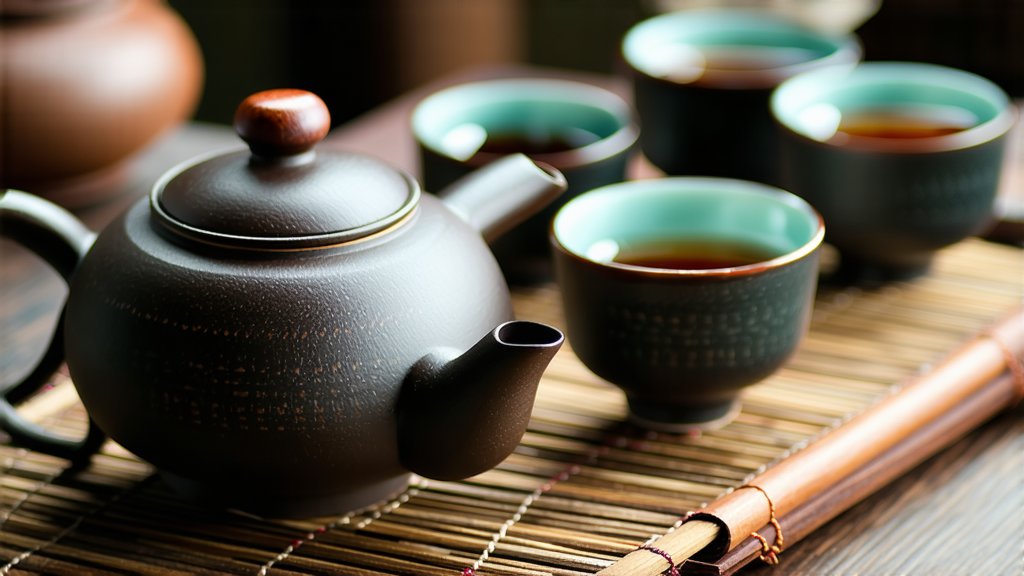
In the vast and diverse landscape of Chinese tea culture, few varieties hold as prestigious a position as Keemun Black Tea, also known as Qimen Black Tea. This exquisite tea, hailing from the picturesque Qimen County in Anhui Province, boasts a history that intertwines with the very fabric of Chinese tea heritage. As we embark on this exploration, let us delve into the captivating narrative of Keemun's past, its varietal diversity, meticulous craftsmanship, and the art of its appreciation through tasting.
A Historical Tapestry Woven with Tea Leaves
The story of Keemun Black Tea traces back to the Tang Dynasty (618-907 AD), a period when tea was first cultivated in the region. However, it wasn't until the 19th century that Keemun gained international acclaim. In 1875, during the late Qing Dynasty, local tea farmers in Qimen County innovated a unique method of tea production that combined elements of both green and black tea processing. This revolutionary technique gave birth to what we now know as Keemun Black Tea, distinguishing it from other Chinese black teas with its distinctive flavor profile and aroma.
Varietal Diversity: A Symphony of Flavors
Keemun Black Tea encompasses several sub-varieties, each offering a unique interpretation of its signature character. Among them, Gongfu Keemun stands out for its robust body and malty sweetness, while Zhengshan Small Species Keemun is celebrated for its delicate floral notes and smooth finish. There's also the more recent innovation of Golden Buds Keemun, which features young, tender leaves plucked in early spring, imparting a particularly refined taste experience. Each variety reflects the terroir of Qimen County, where the combination of misty mountains, fertile soil, and a temperate climate nurtures tea plants to perfection.
Craftsmanship: An Art Form Perfected Over Generations
The making of Keemun Black Tea is a testament to the artisanal skill passed down through generations. It begins with the careful selection of leaves from mature Camellia sinensis var. assamica bushes, typically harvested between April and June. These leaves undergo a series of intricate steps: withering under the sun to reduce moisture content, rolling to break cell walls and release enzymes, fermentation in a controlled environment to develop complex flavors, and finally, drying to halt oxidation and lock in the desired characteristics.
What sets Keemun apart is its partial fermentation process, striking a balance between the freshness of green tea and the depth of black tea. This delicate dance of oxidation, often referred to as "redening," is closely monitored by master tea makers who rely on their senses and years of experience to achieve the perfect level of oxidation—approximately 80% for Keemun. The result is a tea that showcases a rich amber color, a fragrant aroma reminiscent of orchids and honey, and a flavor profile that marries sweetness with a hint of smokiness.
The Art of Tasting: Savoring the Essence of Keemun
To truly appreciate Keemun Black Tea, one must engage in the ritualistic practice of tea tasting, or "nosing" and "throttling." Begin by warming the teapot and cups with hot water to enhance the tea's aroma. Measure approximately 3 grams of loose leaf tea per 200ml of water, adjusting according to personal preference. Use water heated to around 90°C (194°F) to avoid scalding the delicate leaves.
Pour water over the leaves and allow them to infuse for about 2-3 minutes, depending on desired strength. As the leaves unfurl, their essence fills the air, inviting you to take your first whiff—the "nose." Inhale deeply, noting the tea's fragrance, which should evoke images of mountain mists and blooming flowers.
Next comes the "throttle," where you sip slowly, allowing the tea to coat your palate. Pay attention to the initial burst of flavor, followed by mid-notes and the lingering aftertaste. A well-crafted Keemun will reveal layers of complexity, from a velvety texture to subtle fruity undertones, finishing with a sweet aftertaste that persists long after each sip.
Conclusion: Embracing the Timeless Charm of Keemun
Keemun Black Tea is more than just a beverage; it embodies centuries of tradition, craftsmanship, and cultural pride. From its storied origins to the meticulous processes involved in its creation, every aspect of Keemun speaks volumes about China's profound relationship with tea. For enthusiasts seeking an authentic taste of Chinese tea culture, exploring the world of Keemun Black Tea offers not only a delightful sensory journey but also a deeper understanding of the artistry and dedication embedded within each cup. So, next time you savor a brew of Keemun, immerse yourself fully in its history, appreciate the nuances of its production, and let the tea transport you to the misty mountains of Qimen County, where every leaf tells a story.